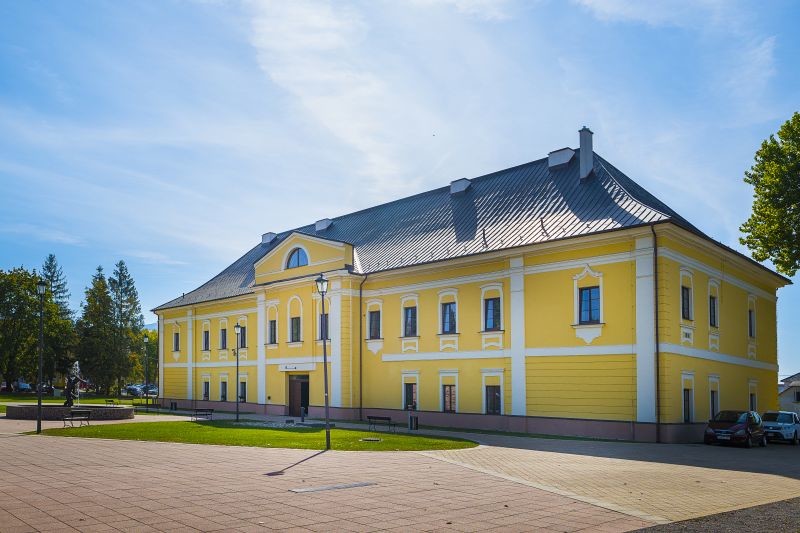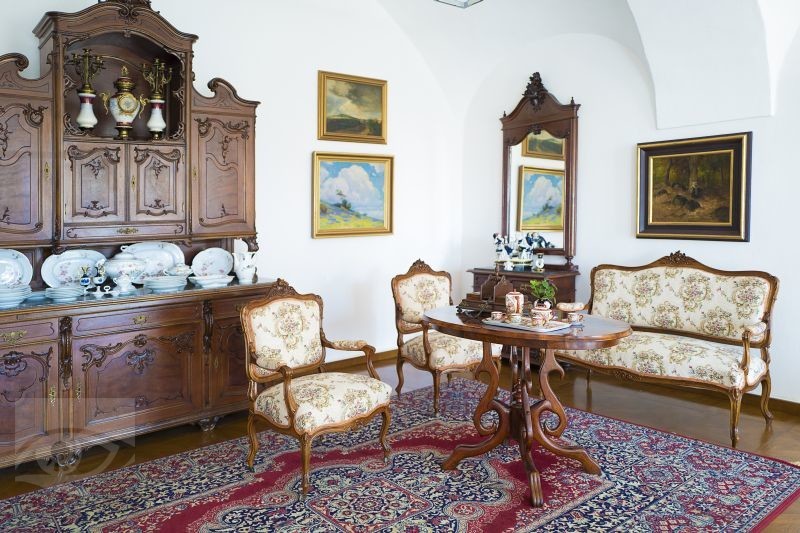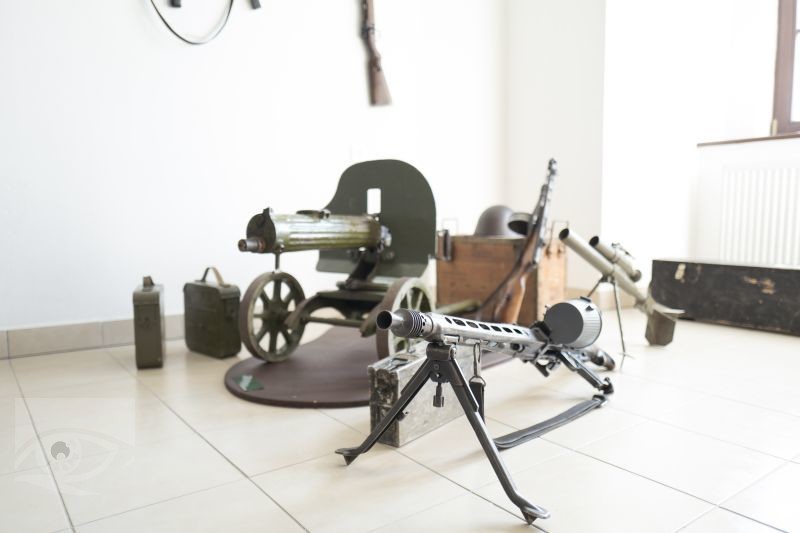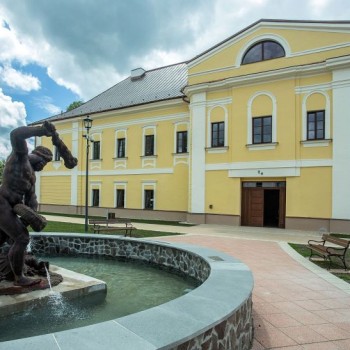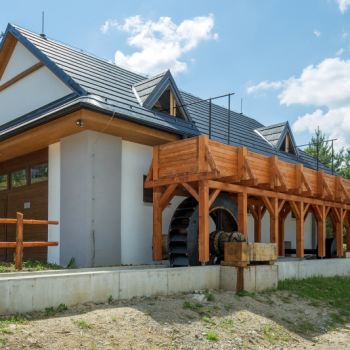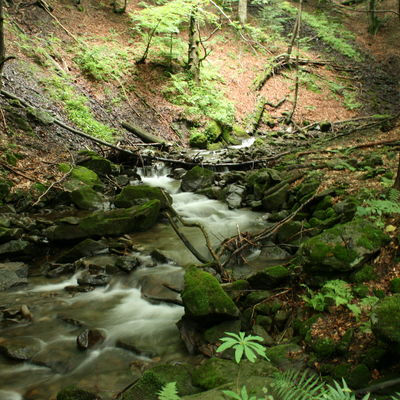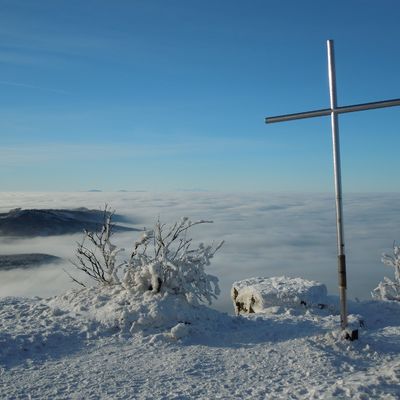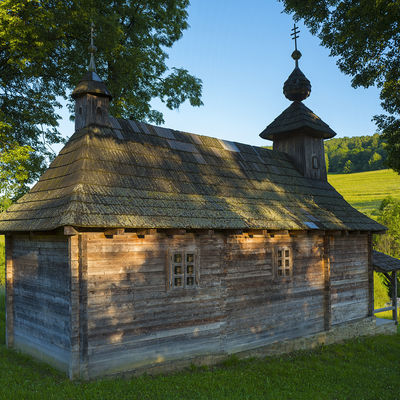Classicist Manor House in Snina
The classicist manor house in Snina was built in 1781 on the site of the originally wooden building by Countess Terézia van Dernáth. She was the granddaughter of the last male descendant of the famous Drugeth family, which had ruled in Snina since the 14th century. Although the Countess initiated the building of the beautiful mansion, she did not live to see its completion. After her death, her sons decided to sell the manor house and the town to the Rholl family. Therefore, from 1799 a new history of this Snina gem began being written. The Rholls completed construction of the manor house and added a fountain with a statue of Hercules to the courtyard.
The two-storey manor house was a large, beautiful building with many rooms – bedrooms, a dining room, guest rooms, the count’s salons, a hall, a kitchen, a pantry. A horse-drawn carriage could pass into the courtyard of the manor house through a spacious corridor. The underground parts of the manor house are of interest, too, as they contained huge cellars, a large bread oven and a bathroom. The underground water supply came via a fountain with a statue of Hercules. In the past, the grounds of the manor house also included French-style gardens and an extensive English park, some of which is still preserved.
After the Second World War, the manor house became the seat of vocational schools and a youth home. In 2009 town of Snina purchased it for the purpose of a complete reconstruction using funds from the European Union. The reconstruction restored the shine to the manor house in Snina and even brought it a bronze medal in the Building of the Year 2013!
Today you’ll find museum exhibitions, gallery exhibitions and the municipal library housed in the Snina manor house. The engaging museum exposition “Echoes of Snina”, which captures three echoes of ancient times, is very popular. First room: when the oppidum – the little town of Snina – is first mentioned; when the new owners of Snina decide to build a manor house, which then lives through its history; when they cast the mythical Hercules in the Joseph hammer mill.
Second room: the echoes of the difficult and inhumane times of the First and Second World Wars and the effort to direct visitors’ attention to a culture of peace. Third room: the echoes of rare historical monuments in the town and a demonstration of the period interior furnishings from the 19th century.
More info: www.kastielsnina.sk
Source of text: www.mskssnina.sk
Source of title photo: Jano Štovka
CHECK ALSO:
Horný Zemplín nie je len tam, kde sa nakrúcala Čiara...
Nudia vás rôzne „prefláknuté“ dovolenkové destinácie, kde sú okolo vás desiatky iných turistov a vy pri čakaní v radoch rozmýšľate, prečo ste radšej nezostali doma? Myslíte si, že už poznáte všetky zaujímavé oblasti u nás? Tak to ste určite neboli na „ďalekom východe“...
Krypta v Osadnom
Turistov zo všetkých kútov Slovenska, ale i sveta, čoraz viac láka unikát nachádzajúci sa v obci Osadné, v sninskom okrese. Ide o kryptu vojakov z 1. svetovej vojny, ktorí padli v neľahkých bojoch v okolitých oblastiach.
Zemplínske Hámre – múzeum a náučný chodník
Obec Zemplínske Hámre leží v doline Barnovho potoka a je vzdialená 5 km od mesta Snina. Je výnimočná svojim múzeom, Hámorským náučným chodníkom s technickými pamiatkami a tiež je významným východiskovým miestom na túry vo Vihorlatských vrchoch.





